The Ten Greatest Ancient Wonders of the Middle East
The Middle East is the cradle of civilizations, the crossroads of ancient trade routes, and a melting pot of cultures that have left an indelible mark on human history. From Egypt's majestic pyramids to the mysterious ruins of Petra, this region boasts some of the world's most famous and exciting ancient wonders. These monuments are not just stones and mortars; they are storytellers of the past, telling tales of strength, dedication and ingenuity. As we explore these ten ancient wonders, we embark on a journey through time, uncovering the secrets and splendor of the rich heritage of the Middle East.
Show key points
- The Middle East is recognized as the birthplace of ancient civilizations and a region rich in cultural diversity and historical significance.
- The Great Pyramid of Giza in Egypt showcases unparalleled ancient engineering, being the tallest man-made structure for over 3,800 years.
- Turkey's Temple of Artemis was an architectural marvel of the ancient world, admired for its grand scale and detailed ornamentation.
- ADVERTISEMENT
- The Hanging Gardens of Babylon in Iraq are famed for their lush, tiered design and remain an iconic yet mysterious wonder.
- AlUla in Saudi Arabia served as a key trading hub on the incense route and preserves remarkable pre-Islamic archaeological heritage.
- Persepolis in Iran stood as the ceremonial capital of the Achaemenid Empire, signifying the empire’s grandeur and administrative prowess.
- Petra in Jordan, known for its rose-colored rock-carved buildings and advanced water conduit systems, reflects ancient ingenuity and beauty.
1. Great Pyramid of Giza, Egypt:

The Great Pyramid of Giza, also known as the Pyramid of Cheops or the Pyramid of Cheops, is the oldest and largest of the three pyramids in the Giza pyramid complex. It was built during the reign of Pharaoh Khufu (Khufu) around 2580-2560 BC, and was the tallest man-made structure in the world for over 3800 years. The pyramid was built using more than 2 million stone blocks, each weighing an average of 2.5 tons. The precision and engineering skills used to build it still puzzle scientists and researchers today. The base of the pyramid covers an area of 13 acres, its sides rise at an angle of 51 degrees and 52 minutes, and its length is more than 755 feet.
Recommend
2. Temple of Artemis in Ephesus, Turkey:

The Temple of Artemis, also known as Artemision, was a Greek temple dedicated to the goddess Artemis. It was located in Ephesus, near the modern city of Selcuk in present-day Turkey. The temple was an ancient engineering marvel, built by King Crosus of Lydia around 550 BC and rebuilt after being destroyed by fire in 356 BC. The temple was famous for its size and the magnificent artwork that adorns it. The temple was destroyed by the Gothic invasion in 262 AD and was never rebuilt.
3. Hanging Gardens of Babylon in Iraq:

The Hanging Gardens of Babylon were one of the Seven Wonders of the Ancient World. It has been described as a remarkable engineering feat with an ascending series of terraced gardens containing a wide range of trees, shrubs and vines, resembling a large green mountain built of mud bricks. It was said to have been built in the ancient city of Babylon, near present-day Hilla, Babylon province, in Iraq.
4. Mausoleum of Halicarnassus in Turkey:
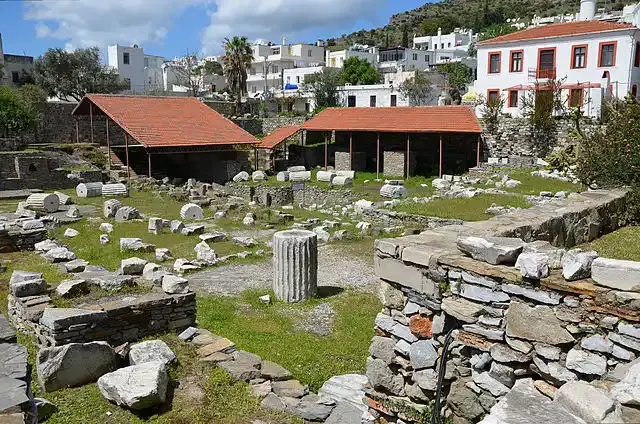
The mausoleum at Halicarnassus was a tomb built between 353 and 350 BC in Halicarnassus (present-day Bodrum, Turkey) of Mussulos, an Anatolian from Caria and satrap in the Achaemenid Empire, and his sister-in-law Artemisia II of Caria. The structure was designed by the Greek architects Satyrus and Pithios of Brieny. The structure of the raised cemetery is derived from the neighboring Lycian tombs. The mausoleum was about 45 metres (148 ft) high, and the four sides were decorated with carved reliefs, each created by one of four Greek sculptors: Leocharis, Prixus, Scopas Paros, and Timotheus. The mausoleum has 400 free-standing sculptures.
5. Alexandria Lighthouse, Egypt:
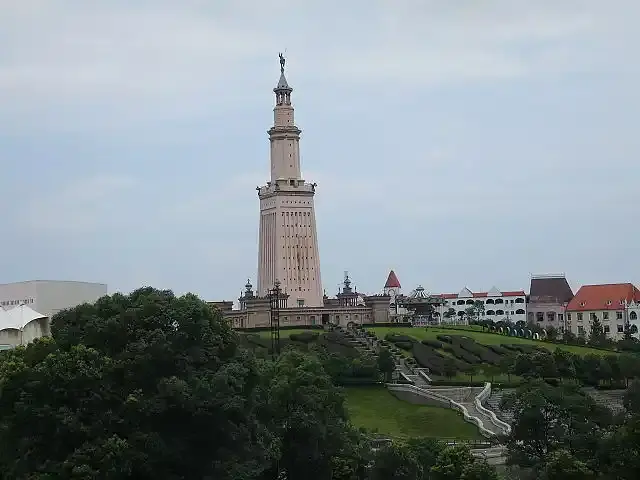
The Lighthouse of Alexandria, also known as Pharos of Alexandria, was a tower built by the Ptolemaic kingdom of ancient Egypt, during the reign of Ptolemy II Philadelphus (280–247 BC). It is estimated that its overall height is at least 100 meters (330 feet). It was one of the Seven Wonders of the Ancient World, considered a technological triumph, and has served as the archetype for all lighthouses ever since.
6. AlUla, Saudi Arabia:

AlUla is an ancient city located in the Medina region of Saudi Arabia. Located in the Hijaz, a region with a prominent place in the history of Islam as well as many pre-Islamic Semitic civilizations, AlUla was a souk city on the historic incense route that connects India and the Arabian Gulf to the Levant and Europe. . The immediate vicinity contains a unique collection of precious artifacts, including well-preserved ancient stone carvings.
7. Baalbek, Lebanon:
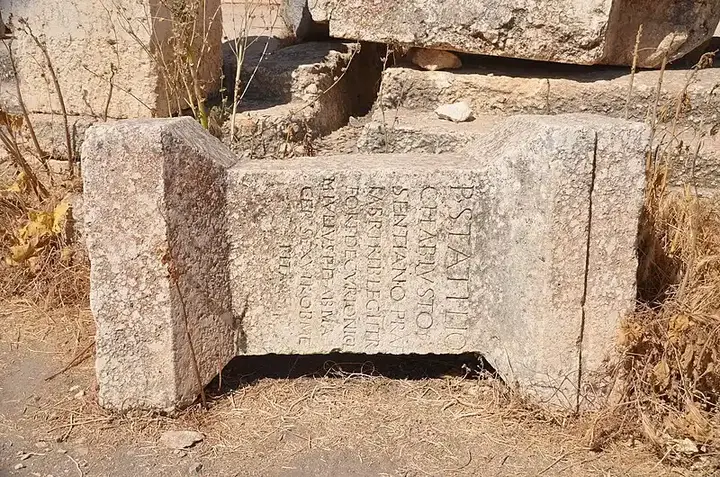
Baalbek, also known as Heliopolis, is a city located in eastern Lebanon and is famous for its temple monuments with exquisite details of archaeological size. It was one of the largest holy places in the empire and contains some of the best preserved Roman ruins in Lebanon. The city was built on a terrace, penetrated from east to west by Wadi Musa (Wadi Musa), one of the places where, according to tradition, Moses struck a rock and water flowed.
8. Persepolis, Iran:
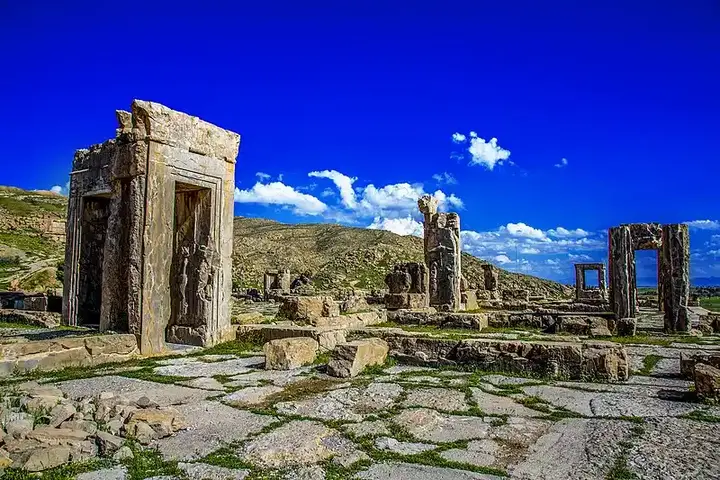
Persepolis was the ceremonial capital of the Achaemenid Empire (c. 550-330 BC). It is located in the plains of Marudasht, surrounded by the south of the Zagros Mountains, Fars Province in Iran. The oldest remains of Persepolis date back to 515 BC. The city served as the main center of the empire, with a complex of palaces and a castle designed to serve as a focal point for governance and ceremonial activities.
9. Petra, Jordan:
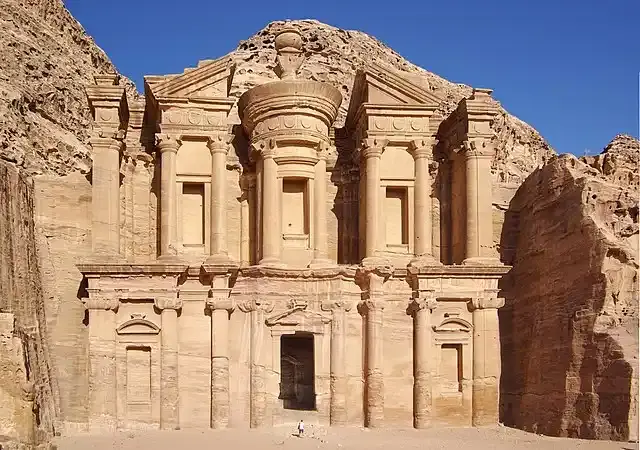
Petra, originally known among its inhabitants as Raqmu or Number, is a historical and archaeological city in southern Jordan. Petra is famous for its rock-carved architecture and aqueduct system. The city is also known as the "Pink City" due to the color of the stone from which it was carved.
10. Palmyra, Syria:
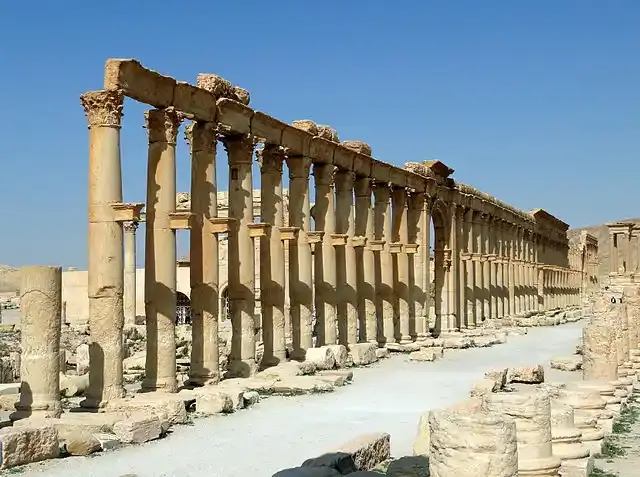
Palmyra is an ancient city in the eastern part of the Levant, now in the center of modern Syria. Archaeological finds date back to the Neolithic period, and documents first mention the city in the early second millennium BC. Control of Palmyra passed on a number of occasions between different empires before it became subject to the Roman Empire in the first century AD.








